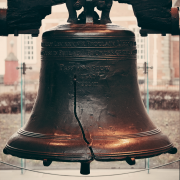Communicate, Engage And Serve Others: How Individuals Build Communities Like Forests
It is sometimes a struggle to communicate that individualism is not atomistic, isolated and disconnected.
When individuals are not bossed around by authorities, they naturally form small collaborative communities, where collaboration can generate good solutions for multiple people with shared interests. The family is the first of these. The neighborhood might be the next one. The neighborhood might come together to form its own school district to educate their kids they way they all see fit, if they weren’t told by centralized government that they had to send their kids to designated schools in designated districts.
Villages and suburbs might form the next layer of community, then businesses that bring together people with shared commercial interests. And so on, starting small and local, at the family, and radiating out from there. Each individual chooses other individuals with whom to associate and collaborate, and those collaborative groups serve others in overlapping, nested networks.
How to illustrate these simple principles has always been a challenge in a world that is dominated by collectivist thinking. Where “society” is viewed as a real and singular entity to whose interests individuals must sacrifice their own. Where authority is viewed as the right for someone you didn’t choose to tell you what to do.
Here’s a novel idea to consider as a metaphor: individual trees in the forest. Maria Popova, at brainpickings.org, always brings delightful perspectives on considered literary topics, and she recently wrote beautifully about a book called The Hidden Life of Trees: What They Feel, How They Communicate. Trees are individuals. They reach for light and air with their branches, and for nutrients with their roots. They seek to be big and strong and robust.
They also participate in community. “Neighboring trees, scientists found, help each other through their root systems — either directly, by intertwining their roots, or indirectly, by growing fungal networks around the roots that serve as a sort of extended nervous system connecting separate trees.”
Every tree is valuable to the community, and is protected and nourished by other trees. “Every tree is a member of this community, but there are different levels of membership. For example, most stumps rot away into humus and disappear within a couple of hundred years (which is not very long for a tree). Only a few individuals are kept alive over the centuries… What’s the difference? It is …. the degree of connection — or maybe even affection — that decides how helpful a tree’s colleagues will be.” Trees, like individuals, choose the others they associate with.
“….a pair of true friends is careful right from the outset not to grow overly thick branches in each other’s direction. The trees don’t want to take anything away from each other, and so they develop sturdy branches only at the outer edges of their crowns, that is to say, only in the direction of “non-friends.” Such partners are often so tightly connected at the roots that sometimes they even die together.”
Individual trees also exhibit a communication capability to warn the rest of the forest of predatory dangers. For example, trees in the African savannah can emit a warning gas (ethylene) when a herd of giraffe start munching. The gas signals to other trees in the community to defend themselves by loading up their leaves with toxins the giraffe herd will avoid. The giraffe move on and the community is saved.
On a broader scale, trees serve to enhance their entire ecosystem (their “society”) even though they don’t sacrifice their individual interests in doing so. When wolves left Yellowstone, “Elk herds in the park increased their numbers and began to make quite a meal of the aspens, willows, and cottonwoods that lined the streams. Vegetation declined and animals that depended on the trees left. The wolves were absent for seventy years. When they returned, the elks’ languorous browsing days were over. As the wolf packs kept the herds on the move, browsing diminished, and the trees sprang back. The roots of cottonwoods and willows once again stabilized stream banks and slowed the flow of water. This, in turn, created space for animals such as beavers to return. These industrious builders could now find the materials they needed to construct their lodges and raise their families. The animals that depended on the riparian meadows came back, as well. The wolves turned out to be better stewards of the land than people, creating conditions that allowed the trees to grow and exert their influence on the landscape.” Central planning of the forest is not required, and not helpful.
This interconnectedness of individual trees and animals, which nurtures the entire ecosystem, precisely reflects the nature of Individualism. Individualism is a system. Each individual extends branches and roots to become as strong as possible, and connects and communicates with others to make the forest strong, which is good for the forest and good for every tree.














